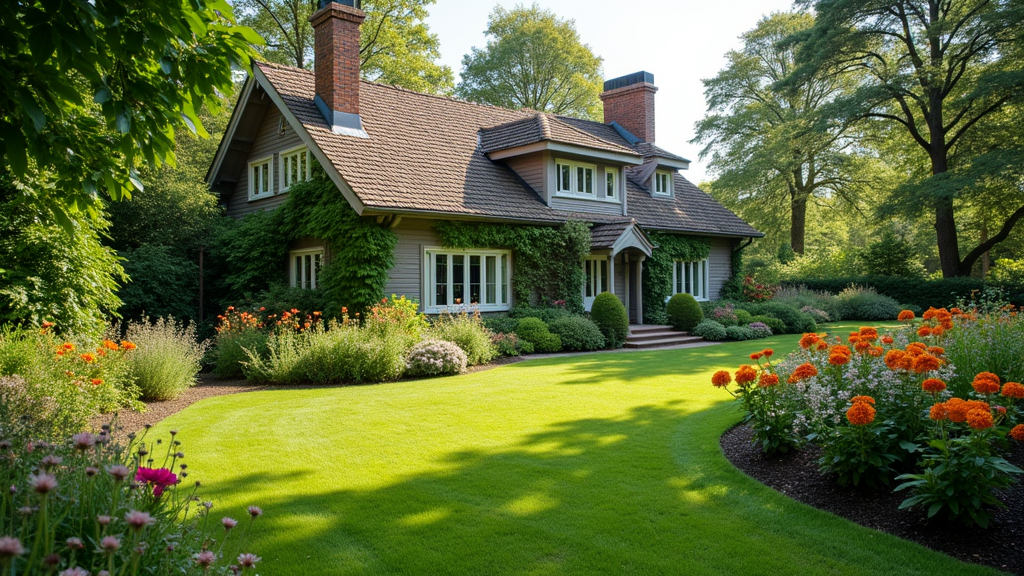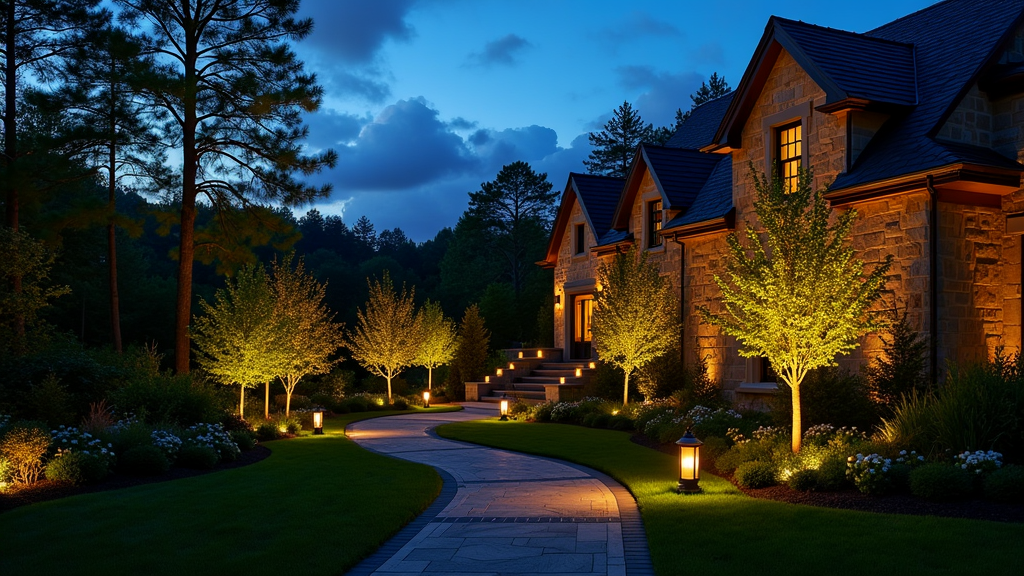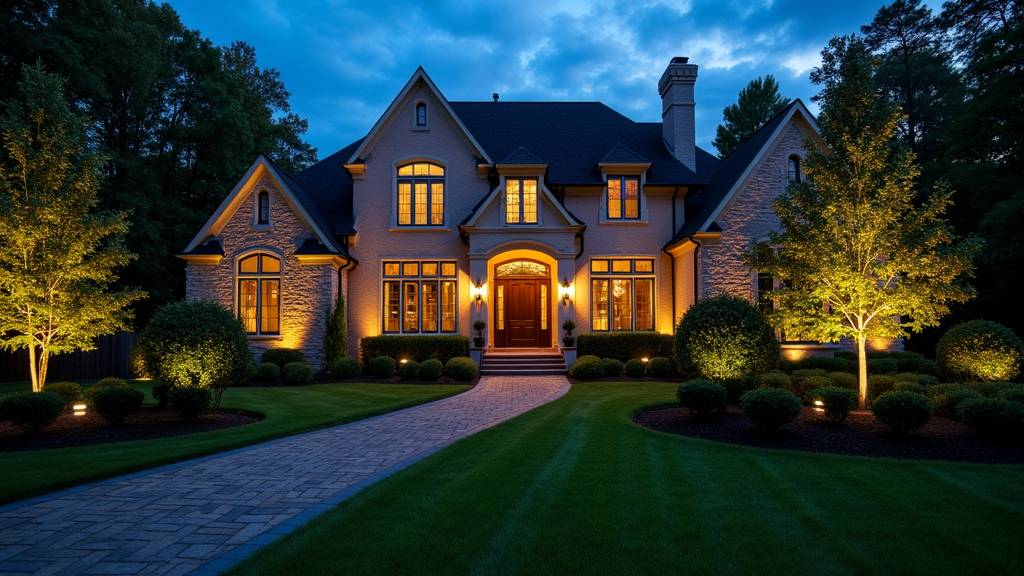Landscape design is an intricate dance between nature and human creativity, and at the heart of it lies a crucial element known as focal points. Whether you're designing landscapes for residential homes, public parks, or commercial properties, understanding the importance of focal points can elevate your project from ordinary to extraordinary. This article will delve into various aspects of landscape design, specifically focusing on the pivotal role that focal points play in creating harmonious and appealing outdoor spaces.
The Importance of Focal Points in Effective Landscape Design
Focal points are those striking features in a landscape that draw the viewer's eye. They serve as anchors around which other elements revolve, providing structure and coherence to the overall design. But what makes a focal point effective? It's not just about being visually appealing; it's about creating a connection with the viewer, guiding their journey through the space while enhancing the overall aesthetic.
In effective landscape design, focal points can take many forms: trees, sculptures, water features, or even architectural elements like arches or pergolas. http://manuelytkn107.lucialpiazzale.com/creating-a-child-friendly-garden-through-thoughtful-landscape-design The key is to select elements that resonate with your overall theme while catering to the specific environment.

Understanding Focal Points: Definition and Types
What Are Focal Points?
A focal point is any feature that stands out within a landscape. It captures attention and serves as a reference point for arranging other elements. Think of it as the star performer in a theatre production; it draws the audience's gaze while supporting actors enhance its brilliance.
Types of Focal Points
Natural Elements: Trees, boulders, or flower beds can serve as organic focal points.
Architectural Features: Walls or paths constructed from stone or brick can create visual interest.
Water Features: Ponds, fountains, or waterfalls add tranquility and movement to any space.
Art Installations: Sculptures and installations can be powerful conversation starters.
Lighting: Strategic lighting can highlight certain areas during nighttime.
Colorful Plantings: A burst of colorful flowers may draw attention amidst greenery.
The Role of Focal Points in Landscape Design
Focal points play several vital roles in landscape design:
Creating Visual Interest: They break up monotony by providing contrast against other elements.

Guiding Movement: By strategically placing focal points throughout a landscape, designers can direct how people move through space.
Enhancing Aesthetic Appeal: An attractive focal point can elevate an otherwise dull area into something vibrant and engaging.
Establishing Themes: Focal points help reinforce themes—whether traditional, modern, rustic, or tropical—tying all elements together cohesively.
Providing Context: They give viewers context regarding scale and proportion within the environment.
Encouraging Exploration: Well-placed focal points invite visitors to explore further into the landscape.
Design Elements That Complement Focal Points
Color Schemes
Colors influence mood and perception significantly; thus choosing complementary colors around your focal point is crucial for effective landscape design. Warm colors naturally attract attention while cooler tones soothe the eye.
Textures
Different textures add richness to landscapes—smooth stones juxtaposed with rough bark create visual diversity that enhances focal points' appeal.
Shapes and Forms
The shapes surrounding your focal point should harmonize without overwhelming it; curvaceous lines may soften stark edges while sharp angles could provide dynamic tension.
How to Create Effective Focal Points in Your Landscape Design
Creating effective focal points involves careful consideration and planning:
Identify Purpose: Determine what you want each area of your landscape to achieve.
Select Materials Wisely: Choose materials that harmonize with existing structures while standing out enough to capture attention.
Scale Matters: Ensure your chosen feature is appropriately scaled to its surroundings; an oversized sculpture may dwarf nearby plants!
Strategically Place Elements: Positioning is key! Consider sightlines from different vantage points so everyone experiences the intended impact.
Layered Landscaping Techniques: Layering plant heights creates depth around your focus area—tall grasses behind shorter blooms frame beautifully!
Consider Seasonal Changes: Select features that offer year-round beauty; evergreens maintain interest during winter months when other plants fade away!
Common Mistakes When Designing Focal Points
Even seasoned designers sometimes stumble when incorporating focal points into their work:
Overcrowding Spaces Ignoring Scale Neglecting Lighting Choosing Inappropriate Materials Forgetting Seasonal ChangesExamples of Successful Landscape Design Using Focal Points
Let’s look at some real-world examples where designers used focal points effectively:
Central Park, New York City:- The Bethesda Terrace serves as a stunning vista point framed by lush greenery.
- Art installations amidst manicured gardens create an inspiring atmosphere.
3.* Gardens by the Bay**:
- Iconic Supertrees stand tall against Singapore’s skyline—a blend of nature and innovation.
4.* Japanese Zen Gardens**:
- Carefully positioned rocks symbolize mountains within peaceful settings—a perfect illustration of harmony between artifice & nature!
The Importance of Focal Points in Commercial Landscape Design
In commercial spaces like malls or office complexes where foot traffic is high, effective use of focal points becomes even more critical:
1.* Brand Representation: Incorporating logos into landscaping gives visual identity!
2.* Customer Flow: Direct pathways leading toward engaging features encourage exploration!
3.* Social Spaces: Benches around water features promote relaxation & interaction among visitors!

FAQs About Focal Points in Landscape Design
What Defines an Effective Focal Point?
An effective focal point should be visually striking yet integrated well with its surroundings—it must also resonate emotionally with viewers!
Can I Use Multiple Focal Points?
Absolutely! Just ensure they don’t compete for attention; each should serve its purpose without overshadowing others!
Are Natural Elements Better than Man-Made Ones?
It depends on context! Natural elements often blend seamlessly into landscapes but man-made structures can add unique character if designed thoughtfully!
How Do I Choose Colors Around My Focal Point?
Opt for complementary colors that enhance rather than clash; warm hues typically attract attention while cooler tones provide calmness!
What Happens If My Focal Point Doesn’t Attract Attention?
Reassess its placement—consider height differences & surrounding activity levels! You might need to adjust positioning or even select another feature altogether!
Can Lighting Enhance My Landscape’s Focal Point?
Definitely! Proper lighting highlights important areas during evenings & sets moods—think soft glows versus stark brightness depending on desired effects!
Conclusion
In summary, understanding the importance of focal points in effective landscape design cannot be overstated! These key features transform ordinary spaces into captivating environments that engage visitors emotionally while providing clear navigation paths throughout their journeys outdoors! By carefully considering how we integrate these essential elements—from natural wonders like trees & flowers through artistic installations—we create rich landscapes brimming with character & charm!